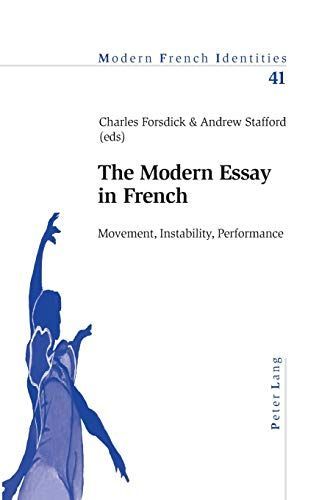
The Modern Essay in French Movement, Instability, Performance
As a textual form, the essai predominates in modern and contemporary literature in French. Emerging from an earlier tradition and distinguished from its English-language counterpart, the French-language essay ranges from Stéphane Mallarmé to Colette, Victor Segalen to Aimé Césaire, Jean Grenier to Pierre Michon. The essai remains, however, one of the most hazily identified of textual forms, its definition often depending on the progressive elimination of all other generic possibilities. Excluded from the archigenres (theatre, poetry, récit), it can even be seen as a hold-all category whose role is to absorb the anarchic extremes of writing. It is perhaps this very lack of pretension to orthodoxy that has drawn so many writers to the essai. The conventional understanding of the term - as a tentative, unsystematic exploration - stresses the genre's provisional nature, its refusal of any claims to comprehensiveness. The essai exploits the devices of anecdote, illustration and humour; it is addressed to a wide and often general audience; it is also intricately linked to the performance of ideological and writerly strategies, often reordering the classical art of rhetoric and persuasion. As the contributions to this volume show, there is a need to outline an ethics and politics, as well as poetics, of essayism.